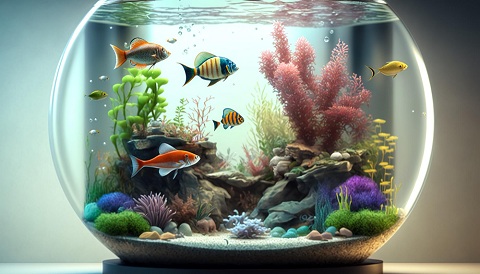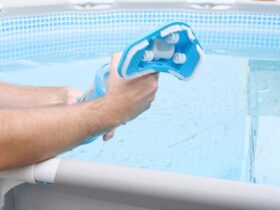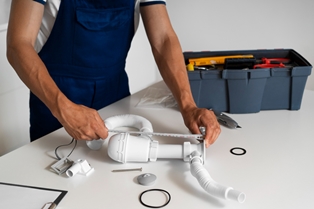Keeping a fish tank can be an immensely rewarding hobby, but maintaining the perfect balance of water chemistry is crucial for the health and well-being of your aquatic pets. One of the key parameters to monitor is alkalinity, which refers to the ability of water to neutralize acids. High alkalinity levels can pose a threat to the stability of your tank’s ecosystem, leading to stress and even fatalities among your fish. In this comprehensive guide, we’ll delve into the causes of high alkalinity and provide you with effective strategies to lower it, ensuring a thriving environment for your beloved finned friends.
Understanding Alkalinity in Fish Tanks
Before we dive into the methods of lowering alkalinity, it’s essential to grasp the significance of this parameter in your aquarium’s water chemistry. Alkalinity primarily measures the water’s capacity to resist changes in pH levels, buffering against acidic substances. In a fish tank, alkalinity is influenced by various factors, including the source of water, biological processes, and the presence of certain minerals.
Causes of High Alkalinity
Several factors can contribute to elevated alkalinity levels in your fish tank:
- Tap Water: Municipal tap water often contains minerals and compounds that can increase alkalinity.
- Decaying Organic Matter: Organic waste and uneaten food can decompose, releasing compounds that raise alkalinity.
- Substrate: Certain types of substrate, such as crushed coral or limestone, can leach minerals into the water, elevating alkalinity.
- Biological Processes: The metabolic activities of fish, plants, and beneficial bacteria produce byproducts that can influence alkalinity.
Lowering Alkalinity in Your Fish Tank

Now that we’ve identified the potential culprits behind high alkalinity, let’s explore effective strategies to bring it down to optimal levels:
1. Partial Water Changes
Regular partial water changes are the cornerstone of maintaining water quality in your fish tank. By replacing a portion of the water with fresh, properly conditioned water, you dilute the concentration of minerals and compounds responsible for elevated alkalinity.
2. Using Reverse Osmosis (RO) Water
Investing in a reverse osmosis water filtration system can provide you with a reliable source of purified water with minimal mineral content. Mixing RO water with your tap water can help lower alkalinity levels effectively.
3. Adjusting pH with Chemical Additives
Commercially available pH-lowering products can help you adjust the alkalinity of your fish tank water. These additives typically contain acids that neutralize alkaline compounds, gradually bringing down the pH to a desirable range.
4. Limiting Organic Waste
Implementing good aquarium maintenance practices, such as regular vacuuming of substrate and prompt removal of uneaten food, can reduce the accumulation of organic waste. This, in turn, helps prevent spikes in alkalinity caused by decaying matter.
5. Choosing Suitable Decorations
Opt for inert decorations and substrate materials that do not alter water chemistry. Avoid using limestone, coral, or shells, which can contribute to elevated alkalinity over time.
6. Monitoring Alkalinity Levels
Regularly test the alkalinity of your fish tank water using a reliable test kit. By staying vigilant and addressing any deviations from the optimal range promptly, you can prevent alkalinity-related issues before they escalate.
FAQs About Alkalinity In Fish Tank
It’s recommended to test the alkalinity of your fish tank water at least once a week, especially if you’re experiencing fluctuations in pH levels or observing unusual behavior in your fish. Regular testing allows you to monitor alkalinity levels closely and take corrective actions promptly to maintain optimal water quality.
While some household items like vinegar or lemon juice may lower alkalinity, they can also introduce other chemicals or compounds into your aquarium water, potentially harming your fish or disrupting the delicate balance of your tank ecosystem. It’s generally safer to use commercially available products specifically designed for lowering alkalinity in aquariums, ensuring both effectiveness and safety for your aquatic pets.
Yes, high alkalinity in a fish tank can have several long-term consequences, including stress and reduced immune function in fish, compromised water chemistry, and increased susceptibility to pH fluctuations. Over time, these effects can weaken the overall health and resilience of your aquarium inhabitants, making them more susceptible to diseases and other health issues.
Lowering alkalinity can potentially affect the pH of your tank water, especially if alkalinity levels were significantly high before the adjustment. However, proper management and gradual changes can help minimize the impact on pH, ensuring a smooth transition to more balanced alkalinity levels without causing undue stress to your fish or disrupting the stability of your tank environment.
Completely eliminating alkalinity from a fish tank is not feasible or advisable, as alkalinity plays a crucial role in maintaining water stability and buffering pH fluctuations. However, you can lower alkalinity to appropriate levels using various methods discussed earlier in this guide, ensuring a healthy and balanced environment for your aquarium inhabitants without compromising water quality or stability.
Conclusion
Maintaining optimal alkalinity levels is essential for creating a healthy and stable environment for your aquarium inhabitants. By understanding the factors influencing alkalinity and implementing the strategies outlined in this guide, you can effectively lower alkalinity in your fish tank and promote the well-being of your aquatic pets.











Find Us on Socials